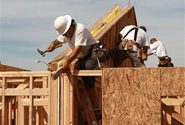Analysis

August 18, 2022
NAHB Survey Reveals Apprehension in Multifamily Housing
Written by Becca Moczygemba
The National Association of Home Builders (NAHB) recently released the results of its Multifamily Market Survey (MMS) and there seem to be some mixed emotions.
There are two separate indices the MMS utilizes to determine market conditions: the Multifamily Production Index (MPI) and the Multifamily Occupancy Index (MOI).
According to NAHB, the second quarter MPI, which “measures builder and developer sentiment about current production conditions in the apartment and condo market on a scale of 0 to 100,” dropped six points to 42. Any number over 50 illustrates that more people reported improving conditions. The MPI is a weighted average comprised of “construction of low-rent units-apartments that are supported by low-income tax credits or other government subsidy programs; market-rate rental units-apartments that are built to be rented at the price the market will hold; and for-sale units—condominiums,” notes NAHB. A decline was seen in low-rent units and for-sale units, while market-rate apartments saw an increase.
The MOI “measures the multifamily housing industry’s perception of occupancies in existing apartments,” notes NAHB. Despite falling eight points, the MOI sits at 60. Like the MPI, the MOI has a breakeven point of 50, with higher numbers denoting increased occupancy.
Sean Kelly, executive vice president of LNWA in Wilmington, Del., and chairman of NAHB’s Multifamily Council stated, “Overall, rental demand remains solid. Rising mortgage interest rates mean low vacancy in multifamily rental.”
By Becca Moczygemba, Becca@SteelMarketUpdate.com







